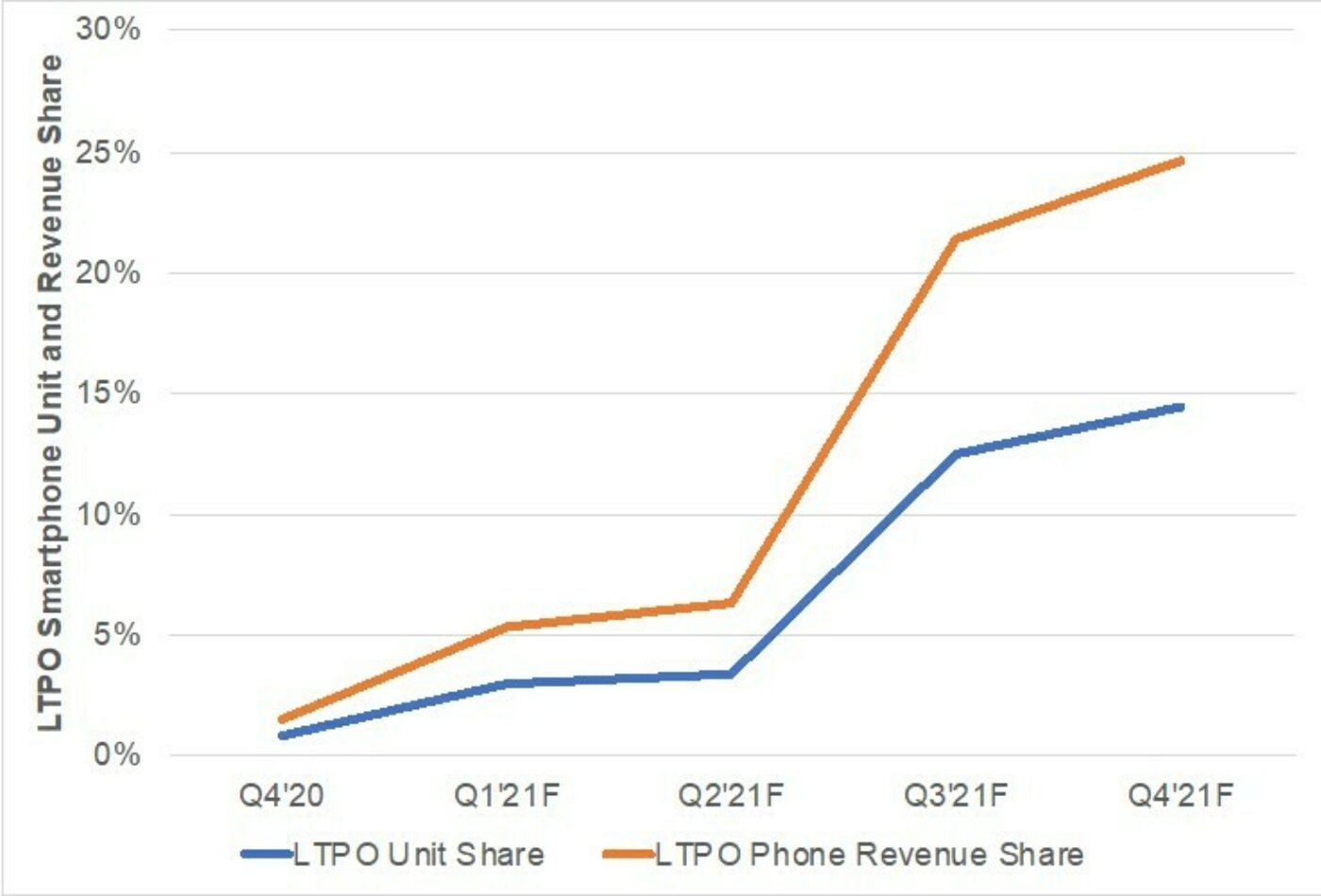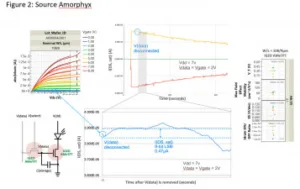With the launch of the new line of Apple 14 phones, the pressure is again on supply of the LTPO based displays for the Pro and Pro Max, referred to as Pro Motion displays. At this point, only SDC has been able to meet Apple’s requirements and so is the sole player shipping. LGD is expected to join as a supplier soon. But for now this leaves SDC with the monopoly supply position to the high end of Apple’s range.

But what led us to this point? What is LTPO technology and why is it so difficult to produce and what are the alternatives?
LTPO (Low temperature Poly Oxide) is an Apple invention aimed at delivering the ability to control refresh rate in high end AMOLED displays. It uses an oxide process for the switching transistors and LTPS for the drive transistors. Figure 1 shows Samsung’s implementation of LTPO (Source OMDIA)
 Figure 1: Samsung’s version of LTPO technology – called HOP (Hybrid oxide polysilicon), source OMDIA
Figure 1: Samsung’s version of LTPO technology – called HOP (Hybrid oxide polysilicon), source OMDIA
Theoretically, the pixel circuit can take advantage of the stability and uniformity of the LTPS transistors to give uniform currents to the pixels across the display, and at the same time benefit from the low leakage current (and hence ability to go to low frame rates) of the oxide transistor.
However, while the theory is simple the execution is not. While there are opportunities to crush out masks steps in the total so that the overall mask count is not that much higher than in the LTPS AMOLED, and most analysts believe that the oxide adder is around 2 additional masks, the reality is that hydrogen escaping from the LTPS processing causes fouling of the oxide transistor. Moreover, fitting all of the elements of the complex pixel circuit into each sub-pixel has been a somewhat difficult task, especially for players who have not mastered the oxide process, for example BOE.
The aim then of the LTPO circuit is to allow for variable refresh that allows for fast switching for gaming at the high end of the scale but also low refresh as low or lower than 1 Hz on the other end of the scale to reduce power consumption in standby modes, leading to around 20% power reduction. The power reduction increases as the ability to hit low frame rate increases. So then nice in theory, but difficult to make in practice. So Apple has ended up making a technology that only one, maybe two players have the technical chops to manufacture
Enter high performance oxide circuits from Amorphyx
So what is the alternative? Well it is the oxide transistors that deliver the low leakage current needed to allow for low refresh rate. But oxide transistors in the past have not had enough mobility and stability for use as the drive transistors that carry the current in an AMOLED display. If a higher mobility, higher stability oxide transistor were available then the pixel circuit could be made in oxide transistors and potentially with a simplified compensation circuit.
Amorphyx Inc, based in Corvallis Oregon, has been working on its proprietary AMeTFT (Amorphous metal TFT) for a number of years. The company has taken cues from developments of FinFETs in semiconductors, to develop a very smooth, flexible amorphous gate metal, coupled with a high-k dielectric insulator. The combination allows higher field strengths across the IGZO material leading to higher mobility. This oxide transistor also meets the stability requirements needed for AMOLED.
In this world then an oxide-only system is conceivable as a pixel backplane for AMOLED. This is already the case for WOLED (White OLED) for TVs. Such a system would have much lower complexity and cost, probably only 40% of the cost of an equivalent LTPS-based system and moreover the chance is that the inherent stability and performance would mean that compensation circuits for AMOLED may be simplifiable.
Amorphyx has now released data to show that this oxide transistor also has very low leakage currents. So much so, that in early data, an AMeTFT oxide transistor can hold a voltage for 20 seconds, delivering a refresh rate of 0.05 Hz. Figure 2 shows how the drain-source current created by the transistor very slowly declines.
Amorphyx has also shown peak mobilities of 75 cm²/Vs and reliability stats of PBTS and NBTS of <1.7V in magnitude after 7200 seconds at 30V applied, and <0.8V in magnitude after 7200 seconds at 20V applied. This is a very high performance oxide transistor.
The implications, of course, from an all-oxide high performance drive capability are that this could displace some of the use of LTPS in displays. It will also change the nature of competition in displays also, as few companies for now are actually world class in IGZO production (for example Sharp and LGD, whilst Samsung SDC is scrambling to master oxide).
It is clear that refresh rate is a basis of product performance that is here to stay. With implications for better high-end gaming and low-refresh-battery enhancement this is a key product differentiator. Apple chose one path that was theoretically strong but practically difficult. Amorphyx opens up another path and new strategic options for smartphone backplanes. (IH)
Thanks to Amorphyx for releasing this article from behind the Display Daily paywall so that it does not count as one of your free articles if you do not have a paid subscription.

